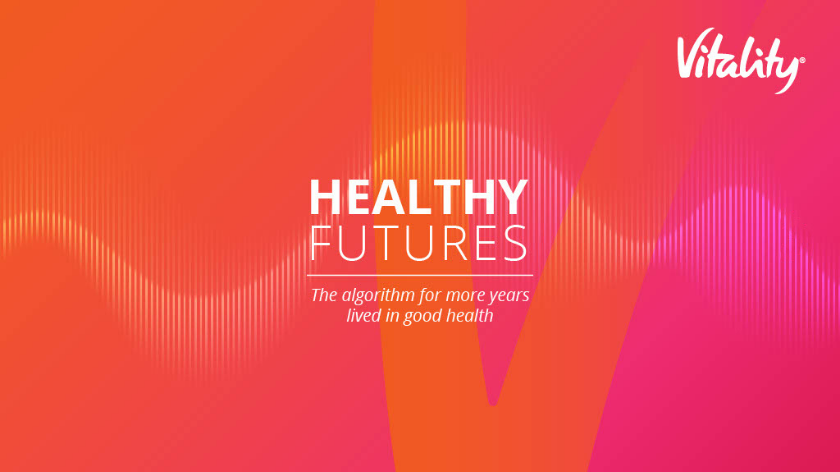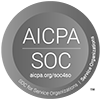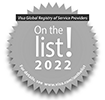At the 2021 Global Vitality Network Healthy Futures Launch, we shared our latest research on bridging the gap between lifespan and healthspan and the key actions you can take to help live a longer, healthier future. The event was hosted by Gillian Tett, Chair of the Editorial Board and Editor-at-Large, US, of the Financial Times, with a special address by historian and best-selling author Yuval Noah Harari. If you missed the live event, you can access the recordings here and find out your healthspan prediction here.
Yuval Harari spoke about the complexity of addressing lifespan and healthspan, noting that “it is far easier to count lifespan than healthspan.” He argued that the healthcare system has “become very good at fighting death and prolonging lifespan…but unfortunately, we have a far less impressive record when it comes to increasing healthspan.” Vitality’s research echoes this sentiment – while people live longer than ever before, these additional years are not always lived in good health. These findings add another layer to the critical message Vitality has been delivering for decades: preventive healthcare must be top of mind for anyone serious about improving health outcomes and containing costs, especially in a post-COVID world.
Our US-focused panel showcased employers and payers who have translated good intentions around preventive health into action, using innovation to make that action count.
Life-saving preventive solutions for at-risk members
Dr. Jonathan Broomberg, CEO, Vitality Health International, shared how Discovery, Vitality’s parent company, built an algorithm to predict which members were at risk of becoming pre-diabetic. The tool also identifies pre-diabetic members who are at risk of advancing to more severe disease. They were able to reach out early to those individuals and enroll them in behavior change programs, encourage them with personalized incentives around medication adherence and other lifestyle behaviors, and prevent disease development. Discovery also identified members at high risk of severe COVID-19 illness and offered this cohort free pulse oximeters to use at home to monitor their blood oxygen levels. They found a nearly 50% reduction in mortality in those who used a pulse oximeter, as they were able to get to the hospital much sooner and get the treatment they needed. Read the full study or the NY Times coverage of the study.
Dr. Broomberg also shared that Vitality is moving toward a more personalized approach. Everyone requires unique interventions due to their unique risks and responses to incentives. Through extensive data sets, we have established the link between individual risks and individual behaviors. Vitality’s latest iteration can tell an individual what specific behavior is likely to make the most significant impact on their health – this is the power of the next best action.
Innovating around the social determinants of health
Renu Chhabra, Vice President, Benefits at McKesson, explained how McKesson targeted the top three social determinants of health risk factors for different segments of the population, addressing low health literacy, economic instability, and transportation issues.
McKesson reevaluated their communication strategies to change how they communicated with their employees to address low health literacy and leveraged financial support resources to address economic instability. Equal access to care is vital, and McKesson is piloting mobile clinics in 2022. The mobile clinics will provide basic medical care to various distribution centers help employees understand their baseline measurements. McKesson has also utilized focus groups to understand what their employees are looking for and have begun to broaden their wellness program.
Helping patients embrace pathways
Dr. Ali Hasan, Chief Medical & Healthcare Officer, Vitality UK, shared how Vitality UK has disrupted every step of the healthcare journey to enable members to access the right care, in the right place, at the right time.
Dr. Hasan also shared that while utilization of telehealth has gone up, satisfaction is declining. The industry has seen a tremendous amount of virtual healthcare usage, but there’s been a slow progression back to lower levels. There are some innovative hybrid models where new patients present in person to establish care and do any diagnostic testing, but follow-up care is managed remotely. They have also seen a sustained increase in less traditional ways of using telehealth, including mental health therapy, which consumers previously had an aversion to, as well as an uptake in their remote skin monitoring service, which uses AI.
Integrating point solutions
Lastly, Jennifer Rost, Partner, McKinsey & Company, shared how cutting-edge prevention-focused solutions are starting to integrate the many point solutions that already exist in the market, enabling more comprehensive care and meeting the consumer where they are.
They also see huge innovation in behavioral health, which has seen greater uptake in the use of digital solutions than in any other condition. Digital innovation in maternity care contributes to better pregnancy outcomes and helping new families live healthier lives after birth.
McKinsey is seeing a trend of integrating more seamlessly, primarily with primary care providers and broader care teams, utilizing patients’ digital data more effectively to prevent and manage a chronic condition. Digital solutions have, in many instances, contributed to the problem of fragmentation and creating more point solutions, which the industry is trying to correct now. And these healthcare innovations are not just for a niche population – almost half of consumers increased their focus on wellness during the pandemic, and a quarter of consumers want an app to help them do so. The opportunity to create solutions for a wide range of consumers is massive, but these solutions must be easy to use and tailored to their individual needs.
While there were many key takeaways from today’s event, what stood out for me most was how essential it is for employers to invest in improving employees’ health so that they can live longer, more productive, and healthier lives. The Vitality Healthy Futures calculator will help people understand actions that maximize the number of years they spend in good health in the future, and Vitality’s proven approach to behavior change can help employees do just that.
Lianne E. Jacobs, MPH, Health Communications Strategist, has a master’s degree in public health from Yale University. She is the only indoor cycling instructor who can’t ride a bike. She enjoys traveling the world, laughing at her own jokes, and tricking her husband into eating baked goods made with hidden vegetables.






